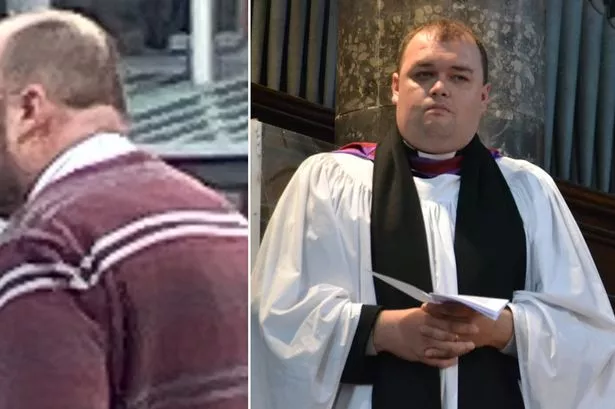Reverend Samuel Erlandson, a once respected figure in the seaside town of Llandudno, North Wales, shattered the trust placed in him by his community when he pleaded guilty to possessing a horrifying collection of child sexual abuse images and extreme pornography involving animals. The discovery of this material exposed a dark underbelly to the life of a man who had been entrusted with the spiritual well-being of his parishioners, leaving the community reeling in shock and disbelief. Erlandson’s confession unveiled a stark contrast between his public persona and the disturbing reality of his private life, raising profound questions about the nature of deception, the fragility of trust, and the insidious nature of online exploitation. The case also highlighted the crucial importance of continued vigilance and education in safeguarding children from the ever-present dangers lurking in the digital world.
Erlandson’s standing within the community had been built over years of service. He was seen as a pillar of the local church, a source of comfort and guidance, and a trusted friend to many. His involvement in various community initiatives and his seemingly unwavering dedication to his pastoral duties had cemented his position as a respected member of Llandudno society. This carefully cultivated image of piety and respectability made the revelation of his crimes all the more shocking. The contrast between the man they thought they knew and the depravity revealed in the charges against him created a sense of profound betrayal and disillusionment within the community. The case served as a stark reminder that appearances can be deceiving, and that even those in positions of authority can harbor dark secrets. The incident also underscored the importance of fostering open conversations about child abuse and ensuring that mechanisms for reporting suspicions are readily available and effectively utilized.
The details of the charges against Erlandson were deeply disturbing. The images found in his possession depicted the sexual abuse of children as young as three years old, exposing the vulnerability and innocence of the victims. The inclusion of extreme pornography involving animals further compounded the horror of the case, painting a picture of deeply ingrained depravity and a complete disregard for the sanctity of life. The nature of these materials highlighted the extent to which online platforms can be exploited for the creation and dissemination of illegal and harmful content, showcasing the urgent need for robust online safety measures and stricter enforcement of existing laws. The case also emphasized the importance of providing support and therapeutic interventions for those struggling with harmful sexual behaviors, aiming to prevent further victimization and address the root causes of these offenses.
The impact of Erlandson’s crimes reverberated throughout the community of Llandudno, leaving a deep scar on its collective psyche. The betrayal of trust felt by parishioners and community members alike was palpable. The sense of shock and disbelief was compounded by the realization that someone they had respected and confided in was capable of such horrific acts. The case served as a painful reminder of the importance of safeguarding children and the need for constant vigilance in protecting them from predators, even within seemingly safe environments. It also highlighted the need for communities to come together in the aftermath of such events to offer support and healing to those affected. The long-term psychological consequences of such a betrayal can be significant, underscoring the importance of providing access to mental health services and creating safe spaces for individuals to process their emotions and begin the healing process.
Beyond the immediate impact on the local community, Erlandson’s case also raised broader questions about the role of the church in addressing issues of child sexual abuse. The incident highlighted the importance of implementing robust safeguarding policies within religious institutions and ensuring that all staff and volunteers undergo thorough background checks and receive comprehensive training on child protection. The case served as a catalyst for renewed calls for greater accountability and transparency within religious organizations, urging them to actively address past instances of abuse and implement preventative measures to ensure the safety and well-being of children within their care. It also underscored the importance of fostering open dialogue within religious communities about the realities of child sexual abuse and empowering individuals to come forward with concerns without fear of reprisal.
The case of Samuel Erlandson serves as a tragic example of the devastating consequences of child sexual abuse and the profound impact it has on individuals, families, and communities. It highlights the importance of ongoing efforts to combat online exploitation, strengthen child protection measures, and provide support for victims. It also underscores the need for open and honest conversations about these difficult topics within our communities and institutions. By fostering a culture of awareness, prevention, and support, we can work towards creating a safer environment for children and holding perpetrators accountable for their actions. The long and arduous process of healing and rebuilding trust in the wake of such a betrayal requires collective effort and a commitment to ensuring that such incidents are never repeated. This involves not only strengthening legal frameworks and enforcement mechanisms but also fostering a culture of zero tolerance for child sexual abuse and empowering individuals to speak up and protect the most vulnerable members of our society.














